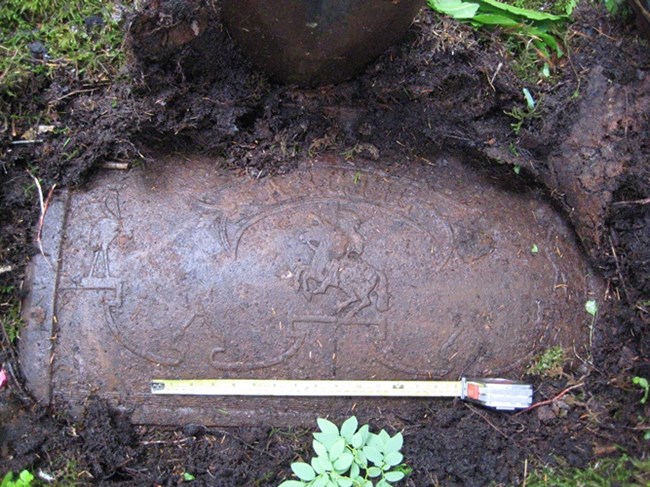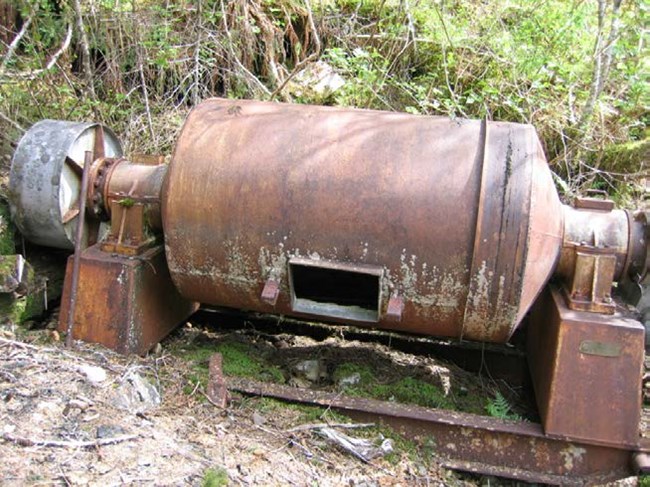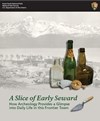
NPS Photo Archeology is the study of past peoples and their way of life. Clues to the past may be found on the landscape, buried under ground, and even underwater. Archeological resources take on many forms including: trash, tools, and the remains of buildings. It is an archeologist's job to analyze these clues, and bring the past to life by giving us an understanding of why and how human culture has changed through the years. Archeologists have been surveying and analyzing archeological remains in Kenai Fjords National Park for over twenty years. Their research has documented numerous prehistoric sites and historic sites, as well as sites located in Seward's original townsite. These investigations have provided clues to the Alutiiq way of life at the time the Russians moved into the Resurrection Bay in the 1790s; the location of the Lowell family home in Seward; and even the location of a possible Prohibition Era still used to manufacture illegal liquor when Alaska went dry in the early 20th century. How can you help protect our archeological sites? If you think you have found an archeological resource, contact a park ranger who will record your find. Please do not remove artifacts from their original location, but report the location along with a photo, drawing or any information you believe is important. You can also contact the park headquarters by phone (907) 318-2040 or by email. 
NPS Photo The National Park Service is the steward for many cultural resources that are important to our nation. Archeological resources are found in most all units of the park system and are evidence of past human activity. Both prehistoric and historic time periods are represented in the archeological record. Management of these cultural resources is mandated by law and policy. Kenai Fjords National Park is comprised of federal, state, Native corporation, and private lands. The park has the authority to manage only federal park lands. Consequently, of the 91 identified archeological and historic sites in the fjords and adjacent islands, only 33 are NPS managed. These include park lands for which English Bay Corporation retain cultural rights. The remaining 58 sites are “local sites”, meaning they have not been relocated, they have been destroyed, or they are owned and managed by other entities. When a site is identified, specific information such as location, site description and condition are recorded. This data is submitted to the Alaska Office of History and Archaeology (OHA) and the site is added to the Alaska Heritage Resources Survey (ARHS). Listed sites are assigned a State identification number which begins with a three letter code representing the USGS topographic quadrangle in which the site is located; for example SEW (Seward), SEL (Seldovia) or XBS (Blying Sound). Numbers are assigned consecutively; SEW-175 is within the Seward quadrangle and is the 175th resource assigned a number within it. Archeological sites within the park are described as prehistoric, protohistoric, and historic. Visual indicators of pre and proto-historic sites consist of scatterings of worked stones in the intertidal zone, ground depressions, middens, charcoal, ash or unnatural looking elements eroding out of shoreline banks, and culturally modified trees (CMT). The historic sites usually consist of structure ruins, mining features and equipment, and trails. Five park sites are a combination prehistoric, proto-historic and historic elements. Which tree is a CMT (culturally modified tree) and which is a BMT (bear modified tree)? 

Left image
Right image
Site Protection:The Archaeological Resources Protection Act of 1979 requires federal land managers treat specific site information as confidential. For this reason sensitive site locations are excluded from all public documents. Terms to know:Alaska Heritage Resources Survey: Inventory of all reported prehistoric and historic sites within the State of Alaska which is maintained by the Office of History and Archeology.
Archeological Studies
A Slice of Early Seward: How Archeology Provides a glimpse into Daily Life in this Frontier Town (2013) by Dan Trepal. Thanks to the archeological investigations of the Seward Privy Project, researchers learned fascinating details about life in early Seward, Alaska.
|
Last updated: September 22, 2025
